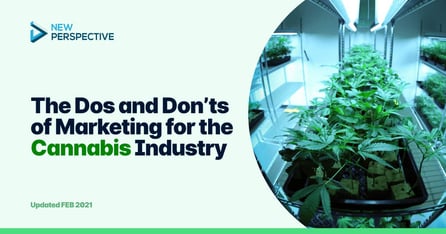7 Ways to Reduce the Carbon Footprint of Your Marketing Efforts

The climate crisis is one of the defining issues of our time – a global challenge that requires a collective effort on all of our parts. You may not have considered it, but your marketing department can contribute to the solution. Digital technologies make up nearly 4% of GHG emissions, with that number expected to double by 2025.
Whether your company has made a commitment to going Net Zero or not, it’s a big goal that requires a lot of steps along the way. Your marketing department can help lead the effort by setting a practical example. Here are 7 key strategies to follow to reduce the carbon footprint of your business by creating a carbon-neutral marketing department.
1. Support a WFH Culture for the Marketing Team
When it comes to sustainability, two key trends emerged from 2020’s Covid lockdowns: a halt in regular commuting patterns led to a drop in carbon emissions, and many businesses were forced to transition to remote work. Working remotely, when done right, can be a huge contributor to reducing your organization’s carbon footprint.
Transportation (such as commuting) is the largest contributor to GHG emissions in the United States. Reducing commuting to the office means reduced GHG emissions and improved air quality (not to mention, happier employees!). According to Global Workplace Analytics, it would be possible to reduce GHG emissions by 54 million tons if employees worked from home even just half of the time.
Not having an office also means huge energy savings. It’s estimated that up to 40% of all U.S. carbon dioxide emissions come from buildings, and although commercial properties are becoming more efficient, they still use much higher amounts of energy for heating, cooling, and lighting.
A 2008 study by Sun Microsystems found that the energy consumption of remote workers was half that of those in an office, and that telecommuting reduced workers’ carbon footprints by 98%.
Not having an office also means a mass reduction in paper use, a reduction in the use of plastic and other disposable products as employees are eating from home, and a reduction in duplicated devices, such as extra computers.
While not every department can successfully work from home, marketing most likely can. If your team is working on-site, consider shifting to a hybrid or remote-first orientation, getting buy-in from any key stakeholders.
This is the time to leverage cloud-based project management software such as Asana, Trello, Monday.com, ClickUp and Notion; chat and communication tools such as Zoom, Google Meet, and Slack; and a CRM platform such as HubSpot to shift to a remote working environment.
2. Commit to Going Paperless
The environmental benefits of using no paper are obvious: less paper means less trees being cut down, and more trees absorbing carbon and beautifying the planet. If you’re still using paper, you may need to transition over time to full digitization. First, minimize printing new documents, and convert existing paper documents to digital versions using a scanner or smartphone scanning app.
You can also use OCR (optical character recognition) software to convert the text into content that can be digitally edited. Then, store your documents in a cloud document management and storage service such as Google Drive, Dropbox, Microsoft OneDrive, or Box.
Everything you used to do with paper can be done on the cloud: there’s an abundance of cloud-based SaaS tools out there now. Document creation and collaboration? Use an office suite such as Google’s G Suite or the Microsoft Office Suite.
Contracts and agreements? Use an e-signature tool such as DocuSign, PandaDoc, HelloSign, or AdobeSign. Still sending paper invoices? Do your bookkeeping and invoicing with software like QuickBooks or Freshbooks, or invoice directly from a payment processor such as PayPal or Stripe.
3. Reduce the Power Consumption from Work Devices
Your equipment choices also have a big impact in reducing your marketing department’s carbon footprint. One major way to cut down on energy consumption is to use laptops whenever possible: they consume up to 80% less power than the equivalent desktop computer.
Aside from some graphic designers and developers, most marketers can easily complete tasks — such as creating content, attending video meetings, and running social media ads —on a laptop. If switching to a laptop isn’t feasible, consider switching your keyboards for one with an away detection instant sleep monitor like this one from Tricklestar.
To further reduce emissions from your department’s electronics, you can buy second-hand devices when possible, purchase from companies committed to achieving Net Zero (such as Apple or Microsoft) that regularly service your equipment to extend their lifetime, and avoid buying extraneous devices. To find the most energy-efficient laptop models on the market, try searching the Energy Star website.
4. Compensate for Emissions with Carbon Offset Contributions
What about those occasions where working remotely just won’t cut it, such as a team-building event, company retreat, or industry conference? Or maybe your company just prefers employees working in the office at least part of the time. For those occasions where commutes or business travel can’t be avoided, make sure to balance the score with a carbon offset.
Carbon offsetting is a way to compensate for your emissions by paying for a CO2 reduction elsewhere. For every carbon offset credit you buy, you help reduce carbon emissions by one metric ton in a place they otherwise wouldn’t be.
The money you spend on a credit goes to sustainability-focused projects, such as planting trees to absorb carbon, capturing methane from landfills, or advancing renewable energy.
While carbon offsetting alone is not the solution to get to Net Zero, it’s a great way to reduce unavoidable portions of your company’s carbon footprint. To get started, try a carbon offsetting service such as this one from Climate Impact Partners.

5. Opt for a Carbon-Neutral Website
You may have heard of a number of products advertising their carbon-neutral status, but a carbon-neutral… website? Hear us out. Data centers hosting Internet traffic are estimated to account for 2% of total GHG emissions worldwide — an amount equivalent to the entire airline industry.
When it comes to hosting your website, you can choose a green web hosting provider such as GreenGeeks or A2 Hosting. Green hosting providers implement energy-efficient initiatives and invest in carbon offsetting so that for every unit of energy they use, they pay to generate the same amount of energy from renewables.
While this doesn’t entirely negate the environmental impact of the Internet, it at least means your website isn’t contributing to the problem. To find a green hosting provider, try searching the Green Web Foundation’s Green Hosting Directory. If you’d rather use a hosting provider not on this list, you can also offset your website’s carbon directly.
Also, optimizing your website page speed, SEO, and user experience isn’t only good for a higher conversion rate — it will make it more energy efficient as well. To learn more about reducing the carbon footprint of your website, see our post on the topic.
6. Favor Climate-aware Vendors, Partners and Suppliers
When calculating your carbon footprint, it can be easy to overlook suppliers and third-party providers. However, when you run ads on a platform, purchase a subscription tool, or order equipment, you are supporting the practices of these businesses — whether or not they align with your Net Zero commitment. The emissions from providers in your value chain not directly controlled by your organization are known as Scope 3 emissions according to the GHG Protocol, and often represent the majority of any organization’s total GHG emissions.
When choosing your third-party providers, do your research on their mission and environmental impact. Take a look at the sustainability or corporate social responsibility (CSR) pages on their websites. What commitments have they made, and where are they on their own journey to Net Zero? Understand how their services contribute to your carbon footprint, and consider creating internal guidelines for selecting responsible providers.
If you want to go far, go together. By selecting suppliers committed to sustainability, you not only help your organization move towards Net Zero, you help your entire network, value chain, and industry.
7. Make Sustainability a Target
Taking your business to Net Zero goes beyond just marketing. It requires company-wide alignment and buy-in to work. But marketing can help lead the way with just one quarterly objective to sustainability metrics.
Alongside other quantifiable KPIs, such as “increase the monthly number of marketing-qualified leads by 25%,” you can add a quantifiable sustainability KPI, such as “offset all business travel.” Treat sustainability goals just like any other business objective. Make them time-bound and quantifiable with clear accountability and measurement.
Creating a full Net Zero plan for any organization can be an overwhelming task, but starting small can get momentum going in the right direction. Focus on measurable short-term actions and milestones to drive down emissions, beginning now. The sooner you start, the easier it will be in the long run.
We Help Brands Tell Their Story While Reducing Carbon Footprints
At New Perspective, we are passionate about supporting companies that are trying to make our world a better place, be it through their technology or their aggressive sustainability/ESG initiatives.
Many of our Cleantech clients boast breakthrough products and services for some of our most pressing worldwide issues. Their missions inspire us and drive our purpose.
Want to get started on great marketing strategies that cut down your carbon footprint as well? Reach out to schedule a conversation with us.




